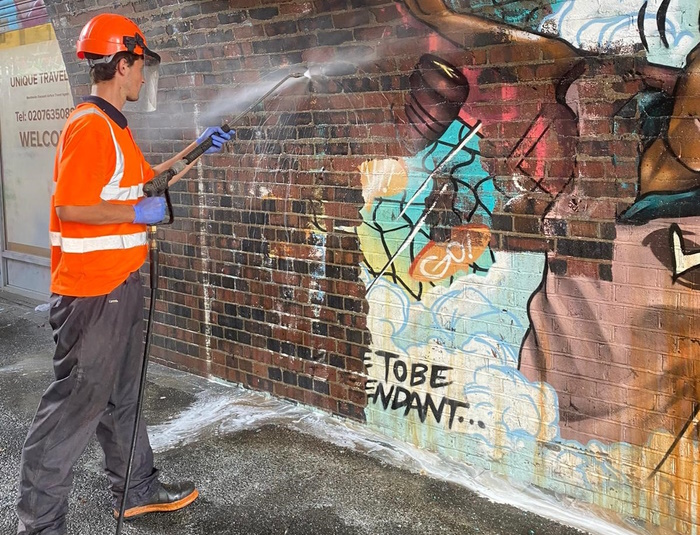
Types of Graffiti
It’s essential to understand the different types of graffiti and the best methods for removing them. The three main types of graffiti are spray paint, markers, and stickers.
Spray Paint – Spray paint is the most common type of graffiti and can be particularly challenging to remove. It’s crucial to identify the type of spray paint used and the surface it has been applied to before attempting removal.
Markers – Markers can be made with a variety of inks, ranging from water-based to oil-based. The type of marker used will determine the best method of removal.
Stickers – Stickers can be particularly challenging to remove, especially if they have been in place for a long time. The best method for removing stickers will depend on the type of surface they are attached to and the type of adhesive used.
Safety First Approach
Prior to starting any work, our team will carry out a full method statement and risk assessment which are available upon request
Highly Qualified
Our team of expert cleaning professionals have extensive experience in the industry and have received specialist training in their areas
Competitive Rates
We're proud to be able to offer some of the most competitive rates in the UK and will guarantee to beat any like-for-like quotation
Fast Response Time
We understand the urgency of our clients' needs so we aim to be on site within just 2 hours of receiving your initial contact
Contact us today for a free quotation
We offer a bespoke cleaning solution for commercial premises
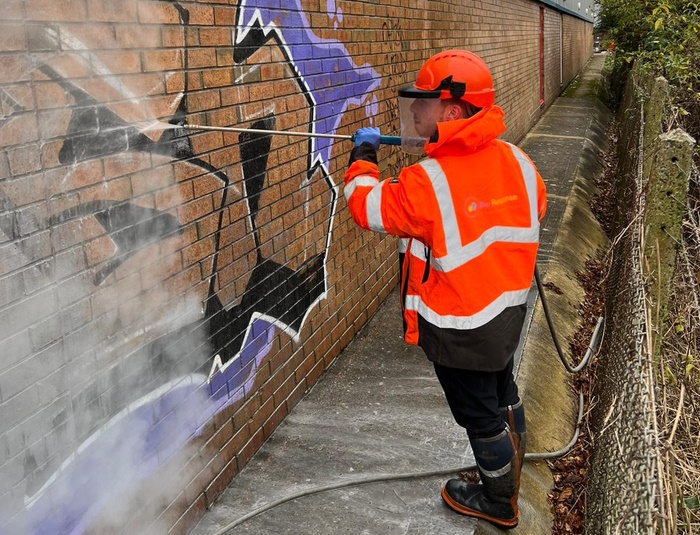
Methods of Graffiti Removal
There are several methods for removing graffiti, including chemical removal, steam cleaning, pressure washing, and abrasive blasting.
Chemical Removal – Chemical removal involves using specialized solvents and cleaning agents to dissolve or remove the graffiti. This method is most effective on surfaces like painted walls and metal, but it can be damaging to delicate surfaces like brick or stone.
Steam cleaning – Steam cleaning ( Doff cleaning ) involves using super heated steam at 150 degrees. At low pressure up to 100 bars, to gently clean away the graffiti, coupled with specialist chemicals this can be a very affective method for removing graffiti.
Pressure Washing – Pressure washing involves using high-pressure water to blast the graffiti from the surface. This method is most effective on hard, durable surfaces like concrete and is less damaging to delicate surfaces than chemical removal.
Abrasive Blasting – Abrasive blasting involves using a high-speed stream of abrasive material, such as sand or grit, to remove the graffiti. This method is most effective on hard, durable surfaces, but it can be damaging to delicate surfaces and should only be used by trained professionals.
- Bin Sheds
- Car Dealerships
- Care Homes
- Colleges
- Commercial Units
- Crime Scenes
- Hair Salons
- Homes
- Hotels
- Nurseries
- Offices
- Pubs
- Restaurants
- Schools
- Universities
Environmental Considerations
It’s important to consider the environmental impact of graffiti removal methods. Chemical removal can release harmful chemicals into the environment, which can have a negative impact on wildlife, vegetation, and water sources. Pressure washing can also use large amounts of water, which can be a concern in areas with water shortages.
Abrasive blasting creates a significant amount of debris, which can also have an environmental impact if not disposed of properly. When selecting a graffiti removal method, it’s essential to choose one that is environmentally friendly and minimizes the impact on the surrounding area. Consider using eco-friendly cleaning solutions and methods that conserve water, and work with a company that follows proper waste disposal practices.
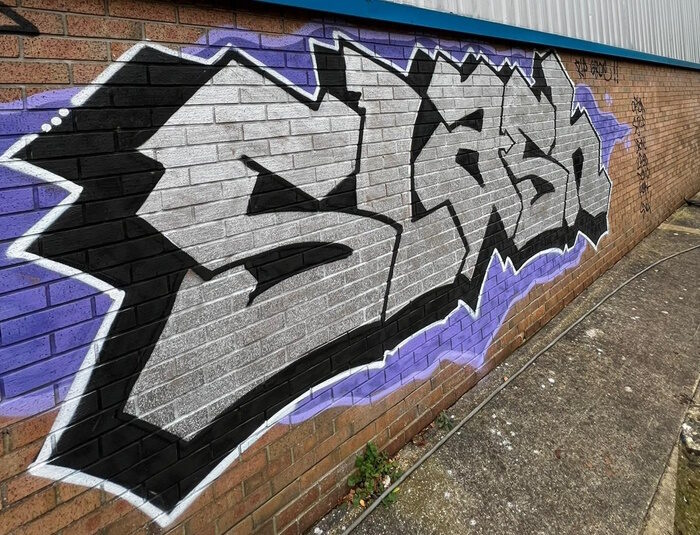
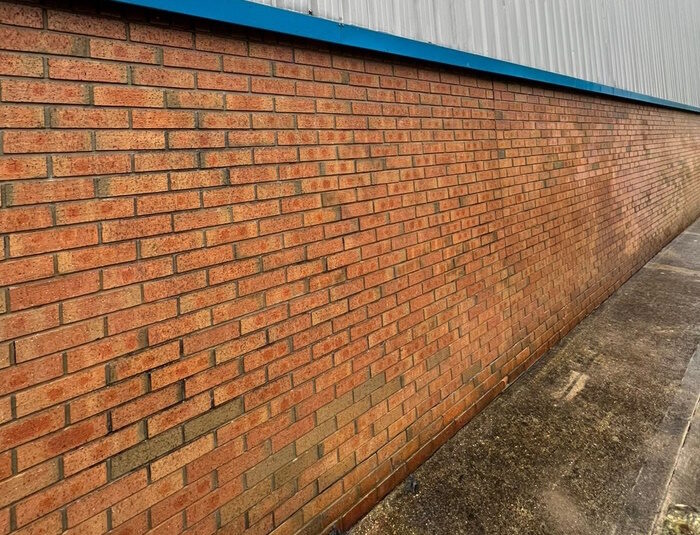
Contact us today for a free quotation
We offer a bespoke cleaning solution for commercial premises
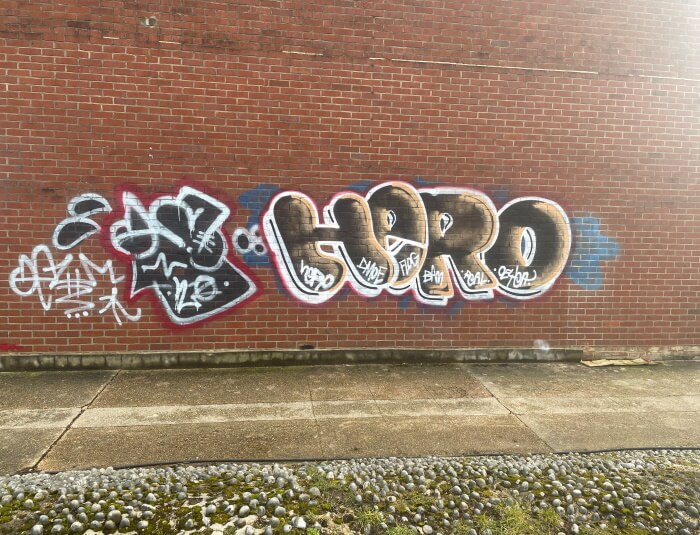
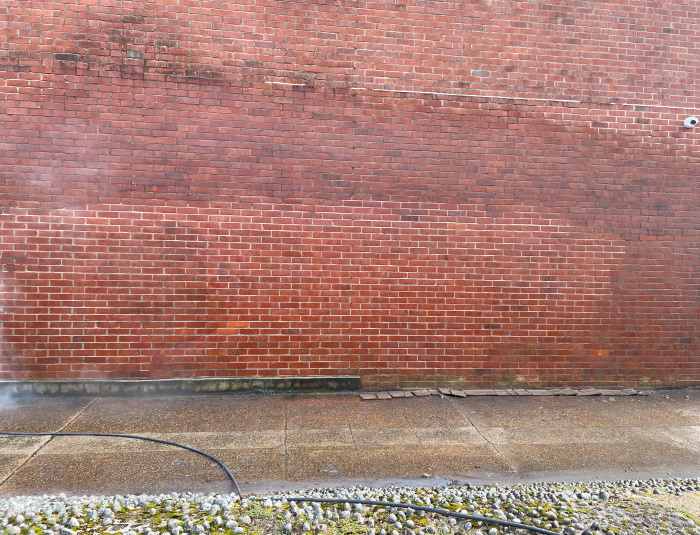
How To Prevent Graffiti?
The best way to combat graffiti is to prevent it from happening in the first place. Here are some tips for preventing graffiti:
Increase Lighting – Well-lit areas are less likely to attract graffiti artists. Consider installing additional lighting in areas that are prone to graffiti.
Remove Graffiti Promptly – Graffiti artists are often encouraged by the longevity of their work. By removing graffiti promptly, you send a message that it will not be tolerated.
Install Deterrents – Deterrents can include physical barriers, like razor wire or anti-graffiti paint, or cameras and alarms. Deterrents can be effective at deterring graffiti artists and can also serve as a visual reminder that the area is being monitored.
Graffiti can be a persistent and unsightly problem, but it can be effectively removed using the right methods. Whether you choose chemical removal, pressure washing, or abrasive blasting, it’s essential to work with a professional who has the experience and expertise to remove graffiti without damaging the underlying surface. Additionally, taking steps to prevent graffiti, such as increasing lighting, removing graffiti promptly, and installing deterrents, can help keep your property graffiti-free.

